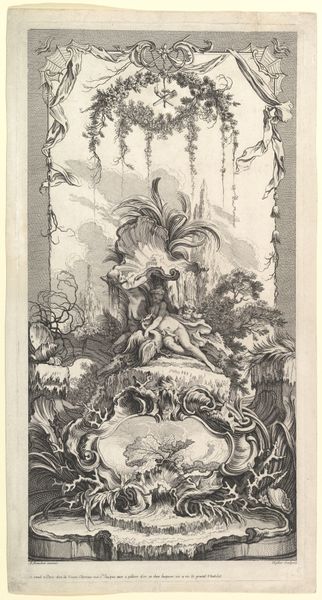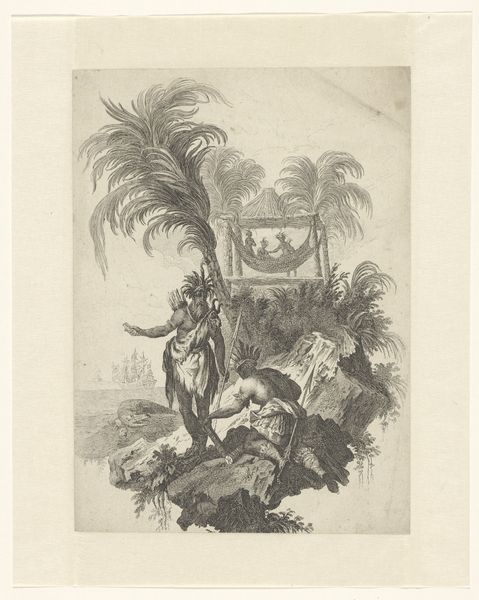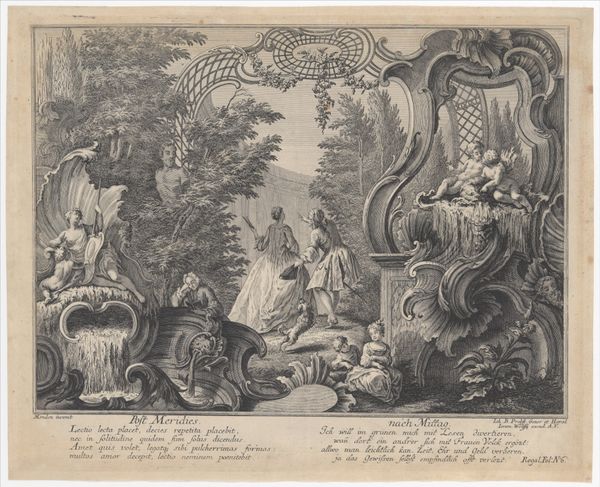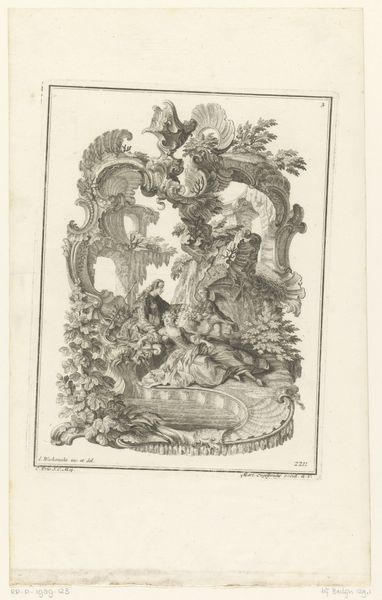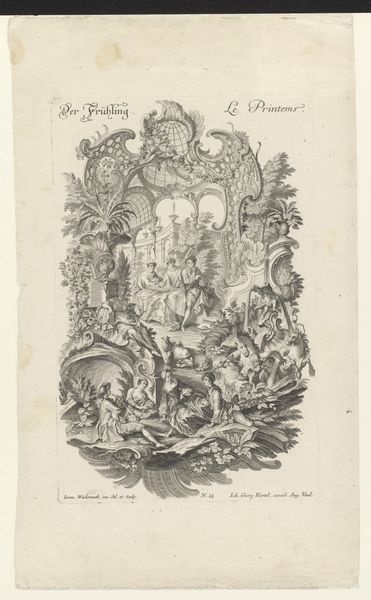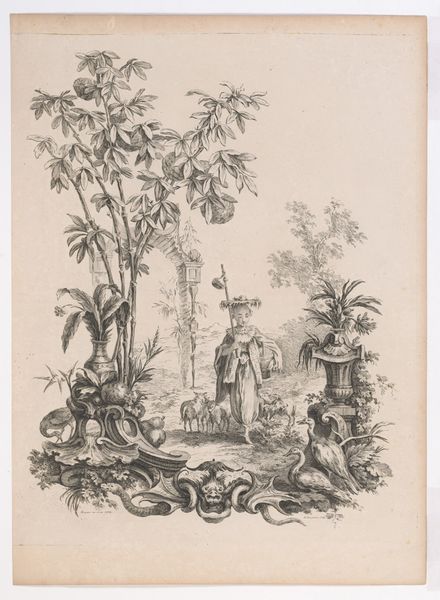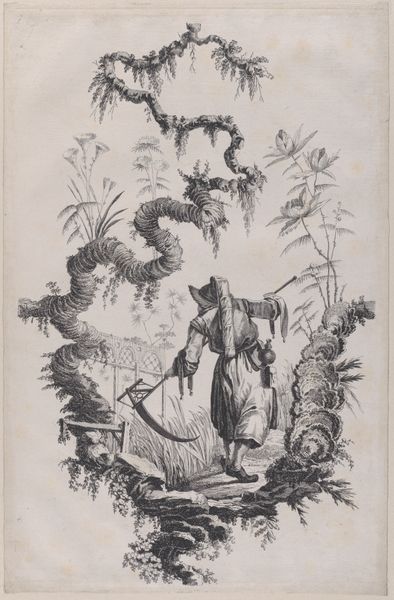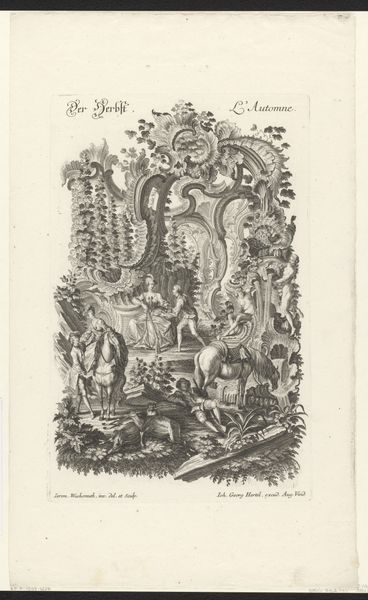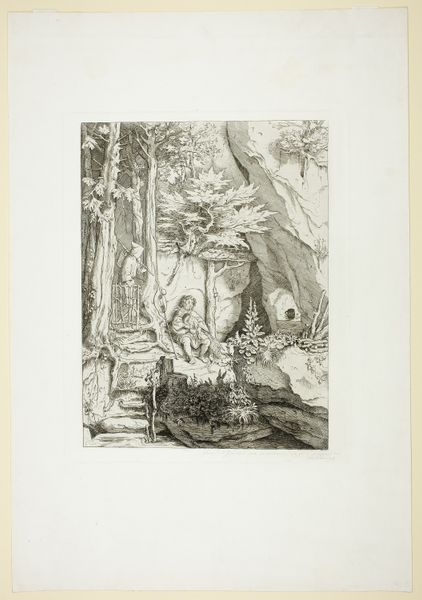
New Book of Twelve Pieces of Fantasy useful for various purposes 1726 - 1746
0:00
0:00
drawing, print, engraving
#
drawing
#
baroque
# print
#
book
#
old engraving style
#
landscape
#
engraving
Dimensions: Overall: 19 11/16 x 12 3/4 x 13/16 in. (50 x 32.4 x 2 cm)
Copyright: Public Domain
Editor: This is Jacques de La Joue the Younger's "New Book of Twelve Pieces of Fantasy useful for various purposes," a drawing and engraving, made sometime between 1726 and 1746. It looks like an elaborate garden design, almost theatrical. What do you make of it? Curator: It's fascinating to consider this not just as a design, but as documentation of 18th-century material aspirations. The title itself suggests a consumable object – a "book" of fantasies. Look at the emphasis on the artificiality of nature: the perfectly manicured trees, the constructed grotto, even the 'ice fountain' which probably needed advanced plumbing works and a special frigid location to construct and then maintain! How does the engraving process itself reinforce this sense of artifice? Editor: Well, engraving is subtractive, right? The artist carves away material to create the image, it almost mirrors the landscaping process of modifying existing natural materials. Curator: Precisely! Consider the labor involved: the draughtsman's skill, the engraver’s technique, and, of course, the enslaved labor that would have supported such grand designs if this were translated to reality in, say, a wealthy plantation. We are seeing a monument not to nature but to the process of control and exploitation. Do you agree with this interpretation? Editor: I think so! The idealized landscape almost obscures the real-world material conditions that make it possible. So the "fantasy" is not just an aesthetic one, but also one of social relations. I didn’t expect that. Curator: It encourages us to think critically about the art’s production as linked to the broader socio-economic realities of its time. Everything from its raw materials to the workforce reflects the economic hierarchy of that time. Editor: Thank you. Now, when I look at it, it makes me think beyond its surface beauty.
Comments
No comments
Be the first to comment and join the conversation on the ultimate creative platform.
